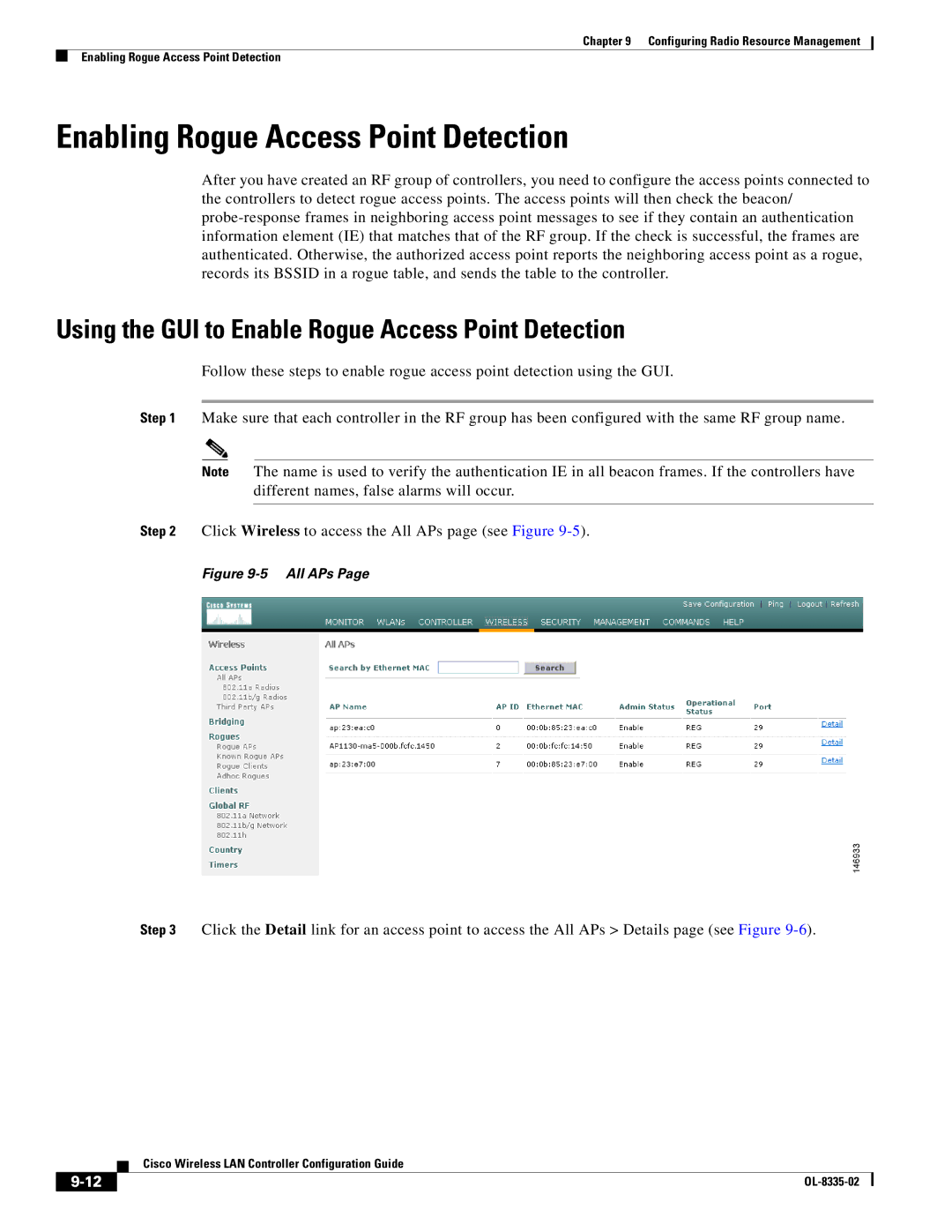
Chapter 9 Configuring Radio Resource Management
Enabling Rogue Access Point Detection
Enabling Rogue Access Point Detection
After you have created an RF group of controllers, you need to configure the access points connected to the controllers to detect rogue access points. The access points will then check the beacon/
Using the GUI to Enable Rogue Access Point Detection
Follow these steps to enable rogue access point detection using the GUI.
Step 1 Make sure that each controller in the RF group has been configured with the same RF group name.
Note The name is used to verify the authentication IE in all beacon frames. If the controllers have different names, false alarms will occur.
Step 2 Click Wireless to access the All APs page (see Figure
Figure 9-5 All APs Page
Step 3 Click the Detail link for an access point to access the All APs > Details page (see Figure
Cisco Wireless LAN Controller Configuration Guide
|
| |
|
